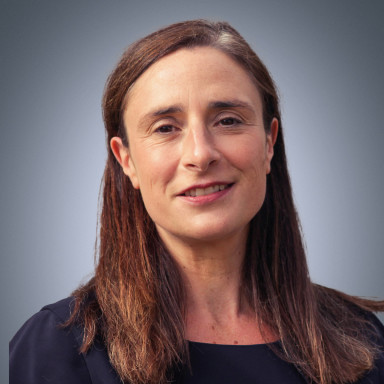Do you earn £47,400 and above?
If you do, you’re in the top 25% of income taxpayers and you’ll be helping pay three quarters (76%) of all income tax this year.
Earn £71,600 or over?
That means you’re in the top 10% and will help pay more than half (59%) of all income tax this year.
The level of tax higher earners face has ramped up significantly, and thanks to frozen tax thresholds, it applies to many of those who don’t consider themselves to be super-rich.
The impact of frozen tax thresholds
The frozen tax thresholds mean many of the top 25% of earners will have been pushed into paying higher-rate or additional-rate tax over the past few years. And for some, they have fallen over the cliff edge of earning £100,000 and are effectively paying 60% tax on a chunk of their salary.
Crossing tax thresholds doesn’t just mean you pay more tax on your earnings, you also face steeper bills on savings.
Basic-rate taxpayers can make £1,000 on their savings without paying tax, for higher-rate taxpayers it’s £500, and additional-rate taxpayers pay tax from the first penny of interest – and because you’ll pay income tax on the extra interest, higher earners pay a higher rate too.
You’ll pay more on dividends too, with higher rates for higher earners – who are also contending with the fact that allowances were slashed from £2,000 to £500 between April 2022 and April 2024 – and the rate was raised in April 2022.
Meanwhile, the capital gains tax rate also rises when you move into paying higher-rate tax, and the tax-free allowance on that has been cut dramatically from £12,300 to £3,000.
Given that higher earners tend to hold more savings and investments, it means they’re paying eye-watering amounts of tax.
£1.79bn of higher-rate tax is expected to be paid on savings this year, and £8.08bn on dividends.
Additional-rate income taxpayers will pay £3.35bn of tax on savings and £7.8bn on dividends.
This adds up to 85% of all tax paid on savings and dividends.
It means it’s vital to consider tax-efficient options. Here are three tax tips to help you cut your tax bill.
This article isn’t personal advice. If you're not sure if a course of action is right for you, ask for financial advice.
Remember, unlike cash all investments and any income from them can rise and fall in value, so you could get back less than you invest. ISA, pension, and tax rules can change, and benefits depend on your circumstances.
3 tax tips for higher earners
Make the most of your pension
Paying into pensions, like a Self-Invested Personal Pension (SIPP), can be a particularly valuable tool for those paying higher rates of tax or nearing an expensive threshold.
That’s because as long as you're a UK resident under 75, you can usually pay into a pension as much as you earn, up to £60,000 a year for most people, and get basic-rate tax relief (20%).
And when your money is in a pension, it can grow free from UK income and capital gains tax (CGT).
If you pay higher-rate tax (40%), you can claim up to an additional 20% in tax relief through your tax return. If you pay additional-rate tax (45%), you can claim back up to an extra 25%.
So, basic-rate taxpayers can turn £80 into £100 with 20% tax relief.
And if you’re a higher earner, you can claim up to an additional 20% or 25% through your tax return – meaning £100 in your pension could cost as little as £55.
Just remember, you usually can’t access your pension until 55 (rising to 57 from 2028). Different income tax rates and bands apply for Scottish taxpayers.
Use your ISA allowances
Each tax year you get an ISA allowance. This tax year the government is offering the chance to squirrel away up to £20,000 – completely free of UK income and capital gains tax.
Investing through a Stocks and Shares ISA means you won’t have to pay UK income (including on dividends) or capital gains tax on those investments, while saving through a Cash ISA will also shelter you from UK income tax.
There are rumours the Cash ISA allowance could be cut. While this is still only a rumour, and any potential cuts wouldn’t necessarily come in the current tax year, you might want to act while you know where you stand.
Don’t forget Junior ISAs (JISAs) too. In the current tax year, you can save or invest up to £9,000 in a JISA for any qualifying child, and all interest, dividends and growth are free of UK income and capital gains tax.
Just remember, you can’t access the money until the child turns 18 – at which point they then take control of the account.
Transfer investments to your spouse or civil partner
If your spouse/civil partner pays less tax than you, or no tax at all, they could be missing out on using valuable allowances each year.
This includes the personal allowance, personal savings allowance, dividend allowance and capital gains tax allowance. You can gift investments to your spouse/civil partner without having to pay capital gains tax.
They can then use their allowances and shelter further investments from tax.
If you’d like an expert on financial planning to help you to make the most of your tax allowances, you’re in the right place. Our financial advisers are dedicated to helping clients achieve peace of mind from having a sound financial plan in place.
It starts with a call with our advisory team. You won’t get personal advice on this initial call, but if it looks like advice is right for you, we’ll book your free initial consultation with one of our financial advisers.
We’ll discuss your options with no pressure to take advice and no charge.
If, having heard what advice can offer and you decide to go ahead, there will be a charge which we’ll discuss before you commit to anything.
We can help you make the most of your allowances and pay less tax with careful financial planning. But in complex situations your adviser might recommend speaking to an accountant or lawyer to complement their advice.


